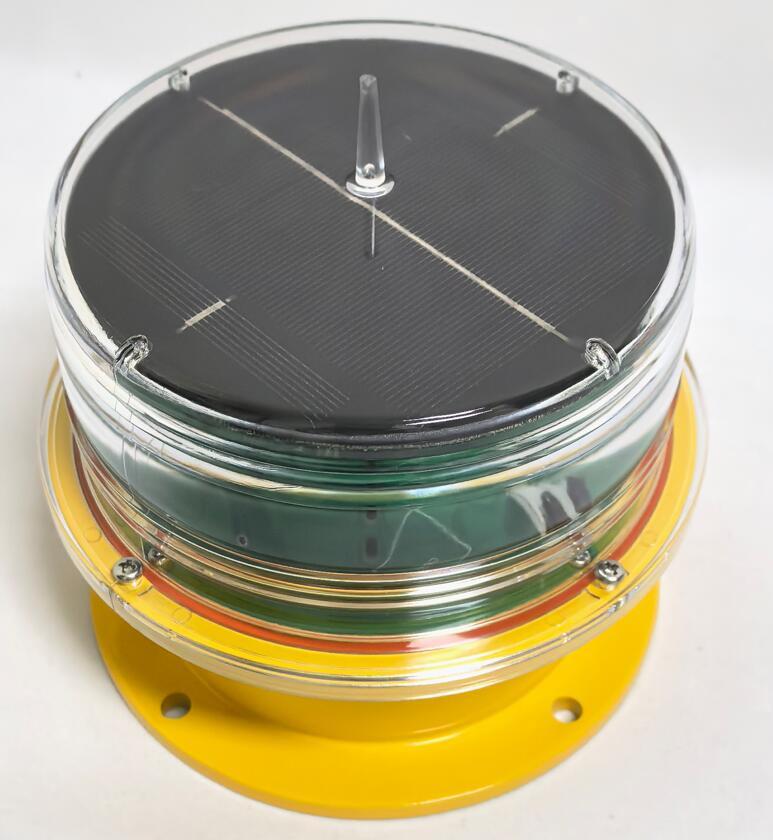Solar Marine Buoy Light: Illuminating the Future of Maritime Navigation
Maritime navigation relies heavily on reliable and efficient lighting systems to ensure the safety of vessels, crew, and cargo. Among the most innovative solutions in this field is the solar marine buoy light, a sustainable and cost-effective alternative to traditional buoy lighting. This article explores the significance, functionality, and advantages of solar marine buoy lights, as well as their role in modern maritime operations.
1. The Importance of Marine Buoy Lights
Marine buoy lights serve as critical navigational aids, guiding vessels through waterways, marking hazards, and delineating safe passages. They are essential for:
Safety: Preventing collisions and grounding by providing clear visual cues to mariners.
Efficiency: Facilitating smooth and uninterrupted maritime traffic, especially in congested or complex waterways.
Environmental Protection: Marking sensitive areas such as coral reefs or marine reserves to prevent ecological damage.
Traditional buoy lights often rely on batteries or external power sources, which can be costly, unreliable, and environmentally harmful. Solar marine buoy lights address these challenges by harnessing renewable energy.
2. How Solar Marine Buoy Lights Work
Solar marine buoy lights are equipped with photovoltaic (PV) panels that convert sunlight into electrical energy. This energy is stored in rechargeable batteries, which power the lights during nighttime or low-visibility conditions. Key components include:

Solar Panels: High-efficiency PV panels capture sunlight, even in overcast conditions, ensuring consistent energy generation.
Battery System: Durable and long-lasting batteries store energy for use when sunlight is unavailable.
LED Lights: Energy-efficient LED bulbs provide bright, reliable illumination with minimal power consumption.
Control System: Advanced controllers regulate energy flow, optimize battery charging, and manage light intensity.
3. Advantages of Solar Marine Buoy Lights
The adoption of solar marine buoy lights offers numerous benefits over traditional lighting systems:
Sustainability: By utilizing solar energy, these lights reduce reliance on fossil fuels and minimize carbon emissions.
Cost-Effectiveness: Once installed, solar marine buoy lights have minimal operational costs, as they do not require fuel or frequent battery replacements.
Low Maintenance: With fewer moving parts and durable components, these lights require less maintenance compared to conventional systems.
Reliability: Solar marine buoy lights are designed to withstand harsh marine environments, including saltwater corrosion, extreme temperatures, and heavy weather.
Versatility: They can be deployed in remote or off-grid locations where access to external power sources is limited.
| Solar Marine Buoy Light |
| Solar Marine Buoy Lights |
4. Applications of Solar Marine Buoy Lights
Solar marine buoy lights are used in a wide range of maritime applications, including:
Navigation Aids: Marking channels, harbors, and shipping lanes to guide vessels safely.
Hazard Marking: Identifying underwater obstacles, shallow areas, or wrecks to prevent accidents.
Environmental Monitoring: Equipping buoys with sensors to collect data on water quality, weather conditions, or marine life, with the lights serving as visual indicators.
Offshore Operations: Supporting oil rigs, wind farms, and other offshore installations by providing reliable lighting for safety and navigation.
5. Challenges and Solutions
While solar marine buoy lights offer significant advantages, they are not without challenges. These include:
Energy Storage Limitations: In regions with prolonged cloudy weather, energy storage capacity may be insufficient. This can be addressed by using high-capacity batteries or hybrid systems that combine solar and wind energy.
Durability in Harsh Conditions: Marine environments are notoriously harsh, with saltwater, UV exposure, and mechanical stress posing risks. Using corrosion-resistant materials and robust designs can mitigate these issues.
Initial Costs: The upfront investment for solar marine buoy lights can be higher than traditional systems. However, the long-term savings in operational and maintenance costs often justify the initial expense.
6. Innovations in Solar Marine Buoy Light Technology
Recent advancements have further enhanced the performance and reliability of solar marine buoy lights. These include:
Smart Lighting Systems: Integration with IoT (Internet of Things) technology allows for remote monitoring and control, enabling real-time adjustments and predictive maintenance.
Enhanced Energy Efficiency: Improvements in solar panel efficiency and LED technology have increased the overall performance of these systems.
Modular Designs: Modular components make installation, repair, and upgrades easier and more cost-effective.
7. Environmental Impact
The shift toward solar marine buoy lights aligns with global efforts to promote sustainability and reduce environmental impact. By reducing dependence on non-renewable energy sources and minimizing waste, these systems contribute to the preservation of marine ecosystems and the fight against climate change.
Solar marine buoy lights represent a significant advancement in maritime navigation technology. Their sustainability, reliability, and cost-effectiveness make them an ideal choice for modern maritime operations. As technology continues to evolve, solar marine buoy lights will play an increasingly important role in ensuring the safety and efficiency of global waterways. By embracing this innovative solution, the maritime industry can illuminate a brighter, greener future for navigation and environmental stewardship.
